A nation’s power grid is too important to society and national security to be privatized.
Hurricane Maria went through Puerto Rico on September 20, 2017 and destroyed the island’s infrastructure. Seventy-five percent of Puerto Rico’s electrical grid transmission lines were damaged during hurricane Maria. As of June 20, 2018, according to Vox, “Hurricane season is back, and the power grid still hasn’t returned to status quo ante. In fact, it remains weaker than before, as temporary generators and stopgap repairs hold it together. There have been some efforts to build microgrids, localized electrical networks that bypass the main grid, but the power recovery effort has been marred by missteps like hiring overpriced contractors.” However, after the hurricane there were some homes with power. The people with power had power only because they had solar panels installed at their home as reported on DemocracyNow.org.
To understand why our power grids are centralized, we must first review the history. The United States power grid was first created in Manhattan and New Jersey in 1882 using direct current (DC) over copper wiring. Alternating current (AC) line was built to connect Niagara Falls to Buffalo, NY in 1896. Commonwealth Edison in 1907 become the first to consolidate power companies into one unit. More information on the history of the United States (U.S.) power grid can be found at the Edison Tech Center website.
The current design of the power grid consists of three main systems; generation, transmission, and distribution. The transmission and distribution systems have substations. The generation system produces the electrician that is delivered to the transmission system. The transmission system delivers electricity to the distribution system via transmission substations. The distribution system delivers electricity to the structurers or users that require electricity via distributions substations. Figure 1, American’s Electric Grid, is an example of the grid.
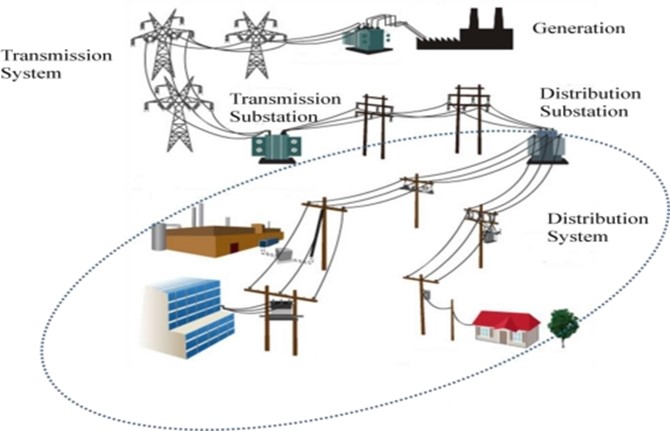
Figure 1
American’s Electric Grid
The resources needed to build a National power grid is enormous and highly environmentally destructive. Regardless of the type, steam, hydropower, geothermal, or nuclear, etc., the same natural resources are needed to manufacture the components. The complete list of natural resources is to extensive too go into but here are a few well known resources: copper, iron ore, and magnesium. All mineral extraction is conducted by using a process called open-pit mining. Open-pit mining pollutes the air, water, and soil; however, no civilization can be created without natural resources. Although civilization needs natural resources, our current process for natural resource extraction isn’t based on the most environmentally friendly process but on the least expensive. Little regard is given to the environment or the local inhabitants. Figure 2, Open-Pit Mine, is a picture of an open-pit mine.

Figure 2
Open-Pit Mine
A centralize power grid is highly expensive to operate and maintain. Our current power grid is a for-profit industry and is run by corporations but subsidized by the American tax payer to a tune of roughly $15 billion a year for fossil fuels. The American public should be outraged that they must pay twice for energy. First, you must pay the energy company with your hard-earned money and then through your taxes. Energy should not be a for-profit industry, it should be part of the commons: food, water, air, energy, transportation, etc. No advanced society uses energy as a weapon against its citizens. Currently the U.S. Federal government doesn’t have a national energy plan. The nation’s power grid design and development are left up to each state. The Department of Energy provides states with the resources needed to develop an energy plan but doesn’t maintain a national energy plan. In my opinion, this is a serious mistake. No civilization can exist without energy. Our power grid is susceptible to damage by a wide range of events and issues. High winds, floods, and ice cause power outages that last from hours to months. Extreme heat and cold causes high demands for electricity which results in brownouts and blackouts. Brownouts are caused when there is an overload to the grid resulting in temporary outage or reduction in voltage. Blackouts are a total loss of power that last for extended periods. Blackouts can also be caused by high demand. The blackout of 2003 affected large portions of the Midwest and Northeast United States and parts of Canada. Here’s the link to an article about the 2003 blackout. When the power grid goes down human lives are put in danger and people lose money from not being able to work. An extended loss of power can result in a collapse of society and massive death. Our current system doesn’t provide backup for the public but instead leaves everyone to fend for themselves. Here is a link to a study about the 2003 blackout. National security is a major issue with having a centralized power grid. The current configuration would allow any hacker to bring down whole sectors of the grid. Terrorists could bring down substations which could bring chaos and social unrest. Something as simple as a truck running into a pole causes neighborhoods to go without power for hours. However, the probability of terrorists bringing down the power grid is low, the U.S. government spends billions on ensuring this never happens. Storms on the other hand, can cause power outages for weeks and is more of an issue than terrorists.
We have the technology and know how to build a modern and sustainable power grid. The first step in decentralizing the power grid is to create a national power grid modernization plan. This plan must incorporate the latest sustainable technology and standardize the grid from rural areas to mega cities. The nations energy industry must also be demonetized and accessible to every citizen. We can no longer afford to live in a primitive society that’s based on class. The primary goal of modernizing the power grid is to ensure every citizen has an equal standardized quality of living. Modernization of the power grid will also be a step-in moving civilization from the current type 0 civilization to a type 1 civilization. However, I do recognize that to accomplish this will require a paradigm shift in the way we view society and life. We can start to decentralize the power grid at the individual level or neighborhood level using solar panels (photovoltaic panels). The average cost for a 10-kilowatt system without battery backup is around $30,000 depending on your geographic area. We can mandate that every new house and commercial building built has solar panels installed to produce at least 50% of the daily power usage. Each town or city can develop a renewable energy modernization plan to retrofit current houses and commercial buildings. These mandates can be paid for by redirecting current fossil fuel subsidies, reducing Department of Defense (DoD) funding, and increasing taxes on the top 1%. No citizen should be required to pay for modernization except through their taxes. Figure 3, Discretionary Federal Budget, is a depiction of the discretionary federal budget created by the Peter G. Peterson Foundation. I recommend every citizen go to the Congressional Budget Office and familiarize themselves with the federal budget. I also recommend going to your city and state government websites and familiarize yourself with those budgets. The bottom line is that we have the money, it’s a matter of priorities.
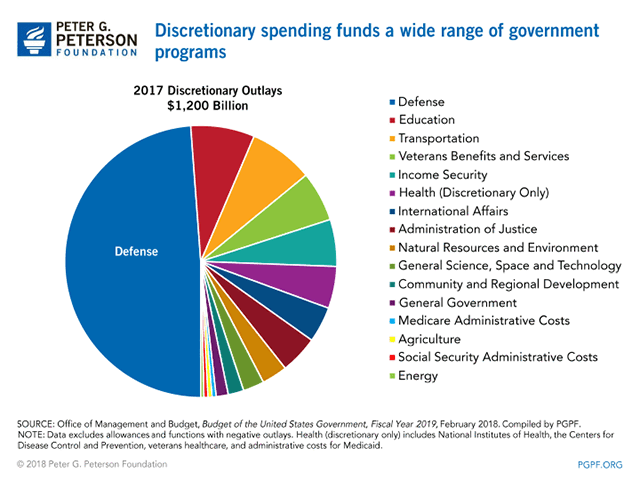
Figure 3
Discretionary Federal Budget
Another solar technology that can be implemented in neighborhoods and city streets is Solar Roadways. Solar Roadways are photovoltaic cells and light emitting diodes (LED) encased in glass panels. Solar Roadways are installed on neighborhood streets and houses are connected to the street. If we have solar panels on our house and integrate Solar Roadways, we can provide our energy needs during the day. Figure 4, Solar Roadways, is the artist Sam Cornett’s rendition of Sandpoint, Idaho.
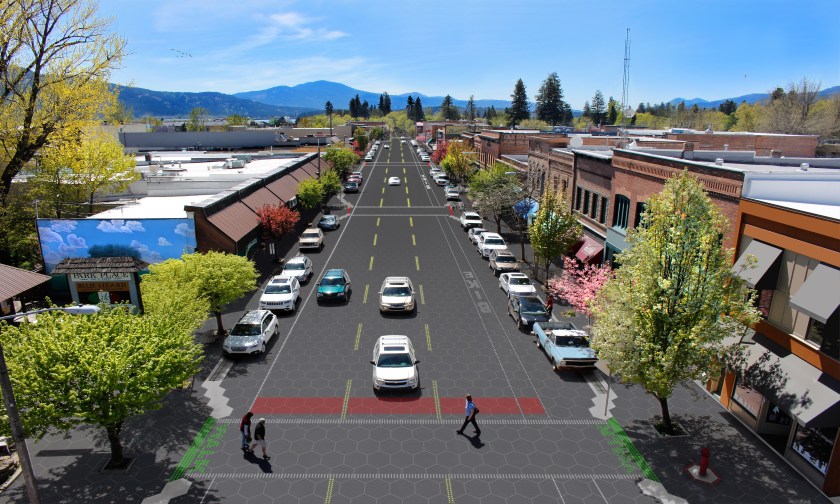
Figure 4
Solar Roadways
The French are currently developing their version of solar roadways called Wattway. Here’s an excerpt from their press kit: Colas, a world leader in transport infrastructure, created a partnership with INES, the French National Solar Energy Institute, to develop Wattway, a photovoltaic road surfacing trafficable for all vehicles. Thanks to this innovation, existing roads can produce electricity, while preserving their capacity to bear vehicle traffic. Wattway is a major groundbreaking technology, an important building block for projects involving smart roads. Figure 3, Wattway Solar Road, is a picture of a section of Wattway in Paris La Defense Courbevoie (92), France. A 54 m² section is used to improve safety by lighting up a semi-pedestrian zone.
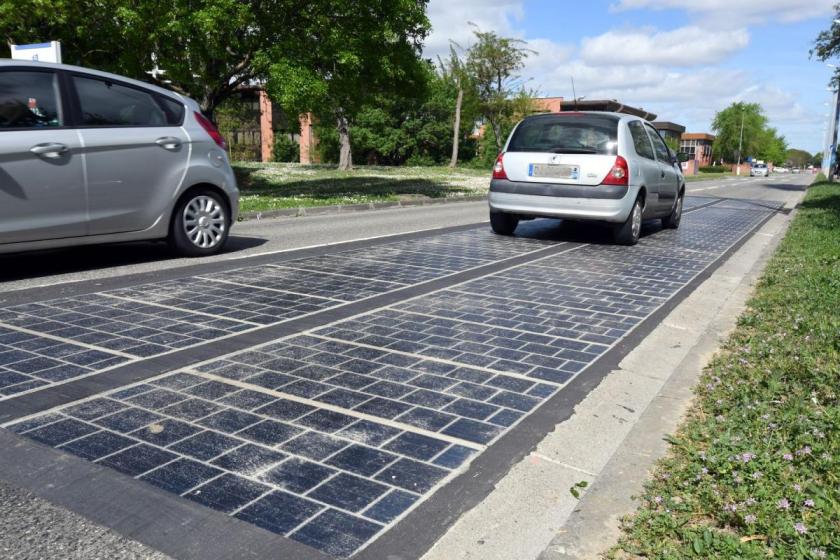
Figure 5
Wattway Solar Road
Solar Roadways and solar panels can provide each household and small commercial buildings with the energy needed during daylight. During the night without battery backup, electricity will have to be supplied by the grid from power generation stations. We can solve this problem by integrating battery backup at the individual household level. Currently battery technology is lagging compared to photovoltaic technology. We can solve this problem by combining all the current projects into one national research and development organization to develop battery backups that are environmentally sustainable and inexpensive. One example of promising battery technology is solar liquid fuel created by Chalmers University of Technology in Sweden. We can combine solar panels, solar roads, and battery backups at the neighborhood level to form microgrids. Each neighborhood can become a mini power generation station or microgrid. There are other solar technologies being developed like solar windows and solar roof shingles. I recommend researching the solar technologies to become informed on the options. Wind technology is another renewable technology that can aid in the decentralization of the power grid and can be integrated into microgrids. Wind turbines are used to convert wind energy into electrical energy. Wind turbines can be horizontal or vertical in design and come in various sizes. Small wind turbines are used in residential areas and large wind turbines are usually used in large open areas and are arranged into wind farms. Here’s a link to the wind projects in the United States. Figure 5, Shepherds Flat Wind Farm, is a picture of The Shepherds Flat Wind Farm in Oregon. The Shepherds Flat Wind Farm produces 845 MegaWatts (MW). The picture was taken by Steve Wilson from Orpington, United Kingdom.
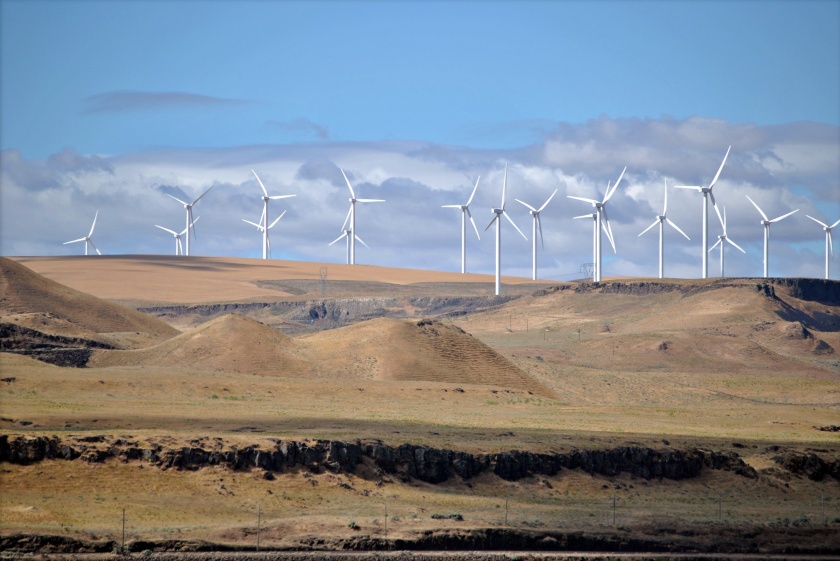
Figure 6
Shepherds Flat Wind Farm
Another technology that is being considered to replace fossil fuels is Space-based Solar Power (SBSP) or Space Solar Power (SSP). Space Solar Power can provide energy for global civilization. The basic concept of SSP is to have solar satellites capture solar energy and convert the solar energy into laser energy or radio frequency (RF) and beam it down to a receiving station on earth. Mirrors will be used to direct the sun’s rays into the satellite. The captured laser or RF energy will be converted back to electricity and provided to the grid. Powerlines can be used to transmit the electricity to the grid or direct wireless transmission can be used. Figure 7 – 16, Mafic Studios Space Solar Power Art SSP 01- 10, are concept drawings.
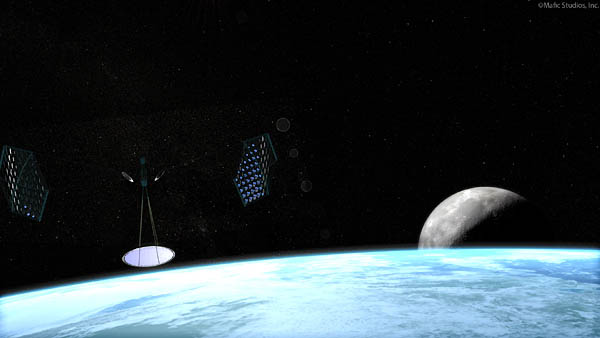
Figure 7
Mafic Studios Space Solar Power Art SSP 01
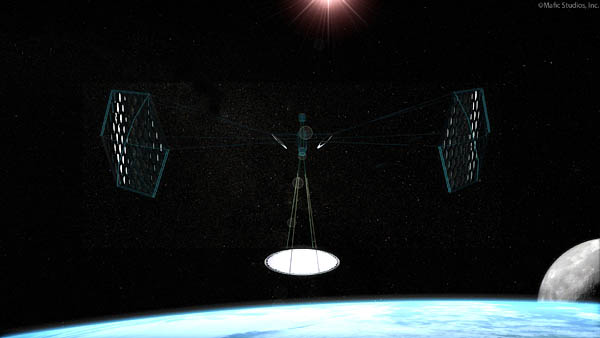
Figure 8
Mafic Studios Space Solar Power Art SSP 02
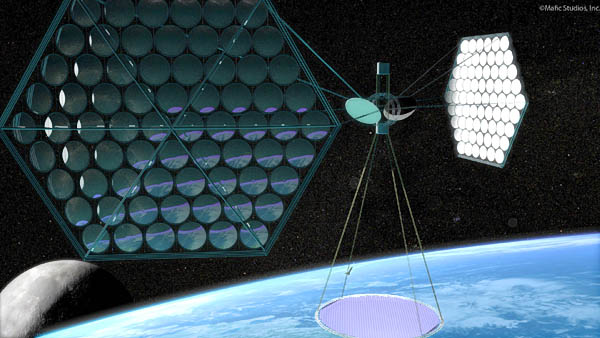
Figure 9
Mafic Studios Space Solar Power Art SSP 03
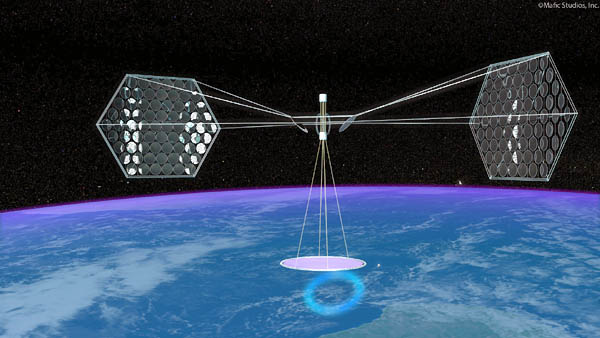
Figure 10
Mafic Studios Space Solar Power Art SSP 04
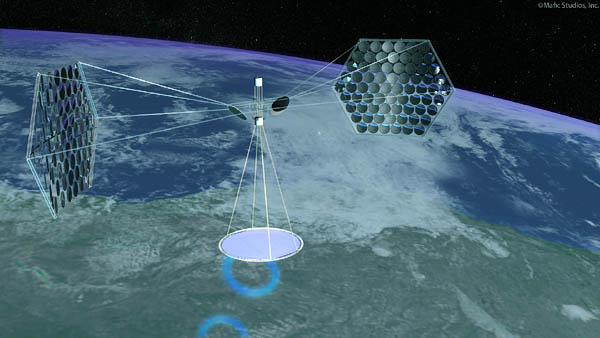
Figure 11
Mafic Studios Space Solar Power Art SSP 05
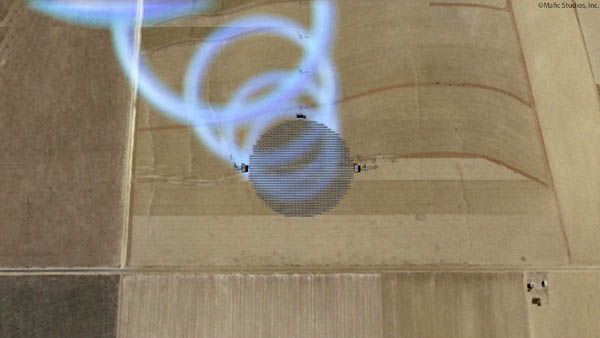
Figure 12
Mafic Studios Space Solar Power Art SSP 06
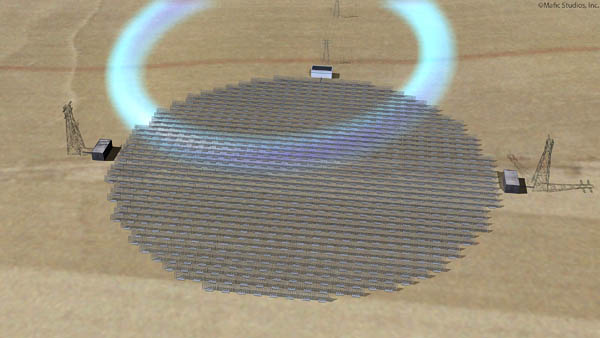
Figure 13
Mafic Studios Space Solar Power Art SSP 07
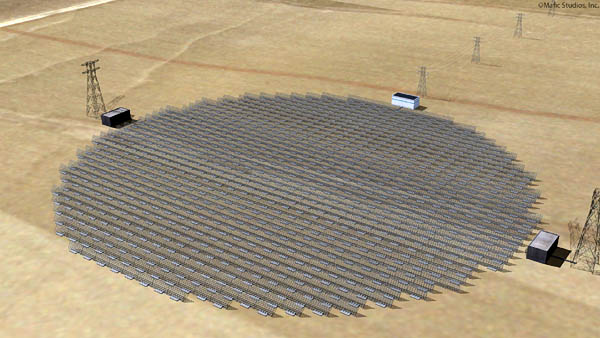
Figure 14
Mafic Studios Space Solar Power Art SSP 08
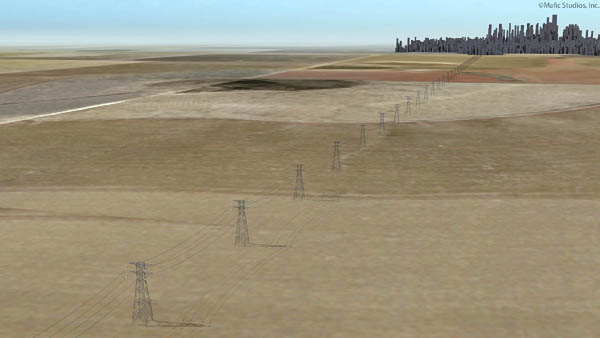
Figure 15
Mafic Studios Space Solar Power Art SSP 09
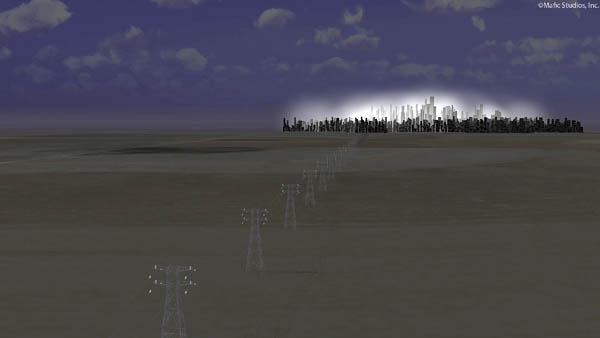
Figure 16
Mafic Studios Space Solar Power Art SSP 10
Wireless transmission of electricity has been around for decades. The initial technology couldn’t produce a higher enough efficiency that wouldn’t result in energy loss; however, this problem has been resolved with new technology. Here’s a link to a video of a demonstration of wireless electricity transmission. H.E. Rae Kwon Chung, a Nobel Peace Prize winner was interviewed on episode E687 “Nobel laureate on fighting climate change. Can Russia-UK trade grow despite tensions? (E687)” on the Russia Today (RT) show “Going Underground” hosted by Afshin Rattansi, H.E. Rae Kwon Chung reveals in the interview that High-Voltage Direct Current (HVDC) technology can be used to transmit renewable energy from solar farms in deserts to the grid. H.E. Rae Kwon Chung states in the interview that the problem of energy loss during transmission has been solved and the distance of transmission has been increased. Here’s a link to the interview.
Decentralizing the power grid can be accomplished by using current technology: photovoltaic panels, Solar Roadways, wind turbines, and space solar power. Decentralization starts with building microgrids at the neighborhood level working up to the metropolitan level. We first must become politically engaged with our representatives on a massive scale. Every citizen needs to call, email, or write their representative at every level of government to voice our demands that a national energy plan that is based on renewable technology is developed and implemented. Energy is a requirement for civilization and cannot be left to corporations. Energy should be treated as a system of civilization and not as a for-profit business. Regardless of the return on investment, energy must be sustainable, clean, and provided to every human being. Energy is to important to civilization to continue with a centralized power grid and fossil fuels are to devastating to the planet to not convert our current energy infrastructure to renewable sustainable energy. The United States has the funding to accomplish this conversion, it’s a matter of priorities. We must start to view energy as a human right and stop using energy as a weapon against the citizens of Earth.


One comment